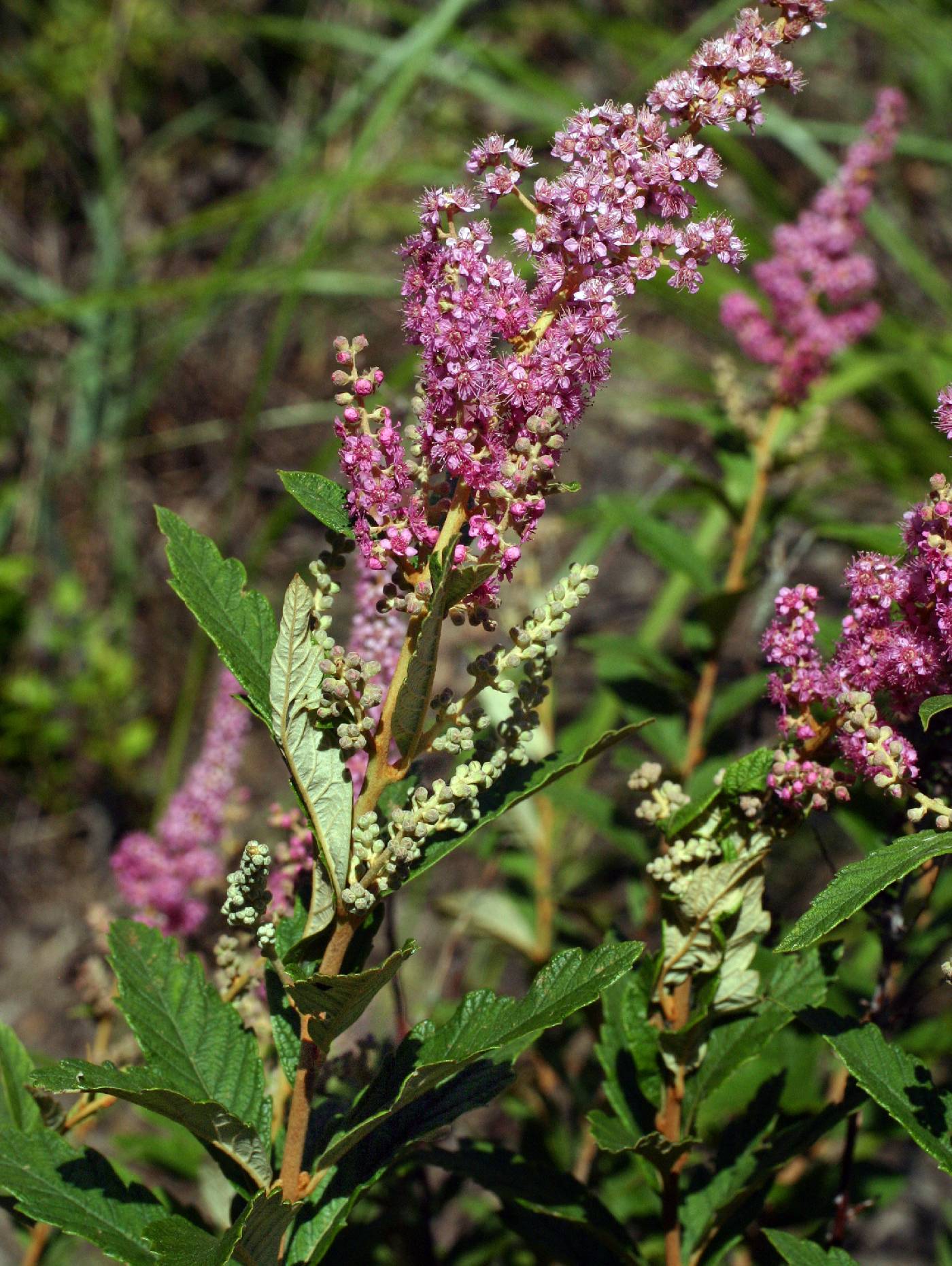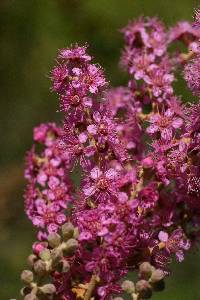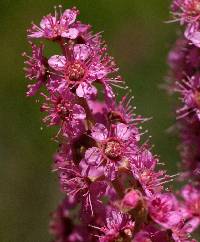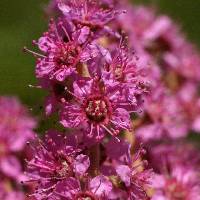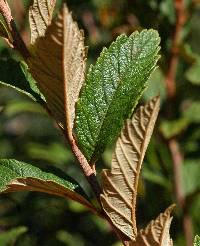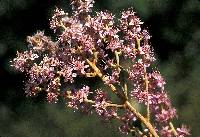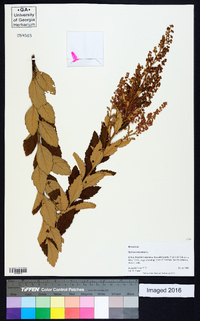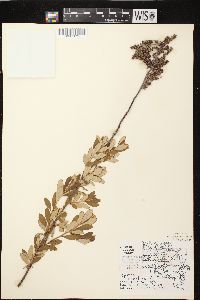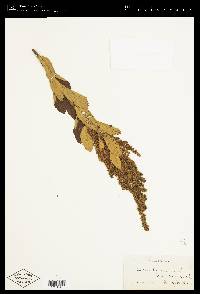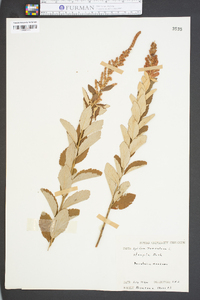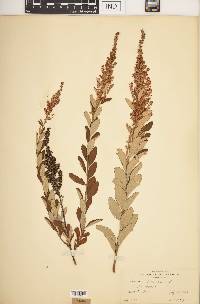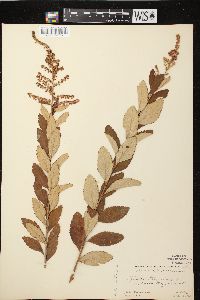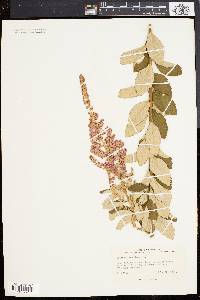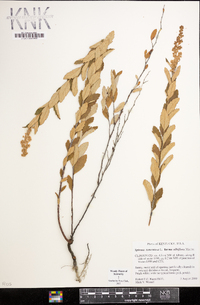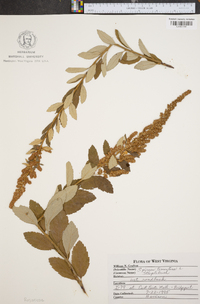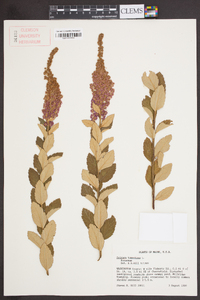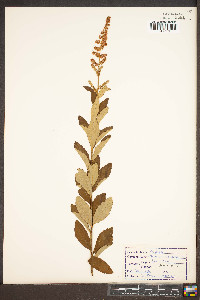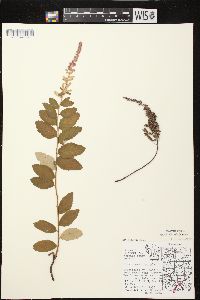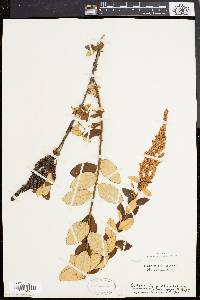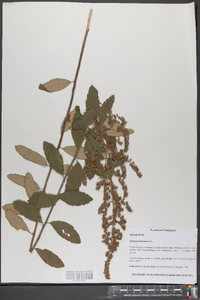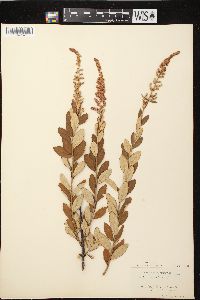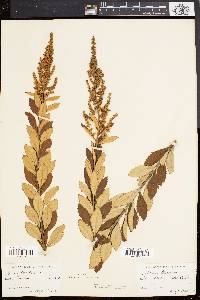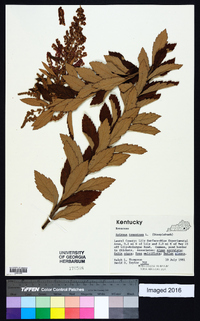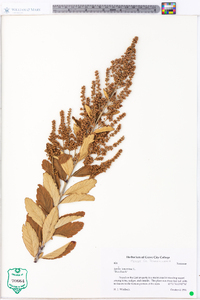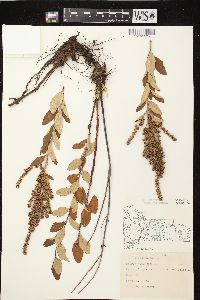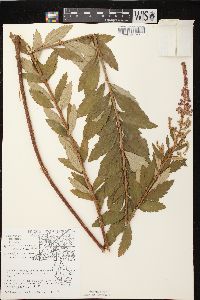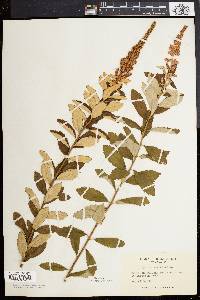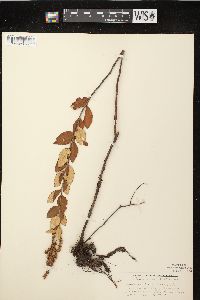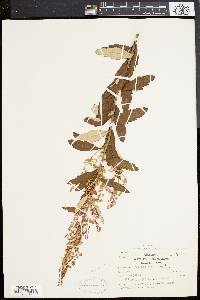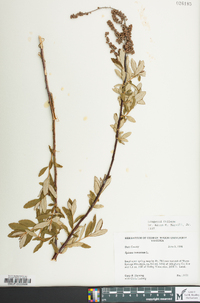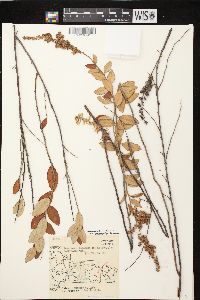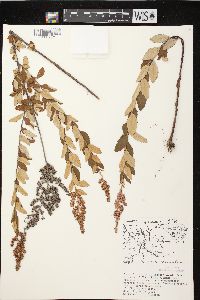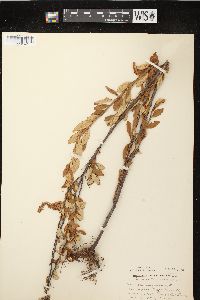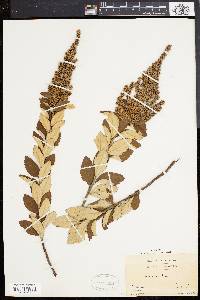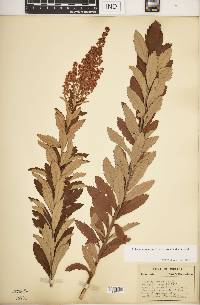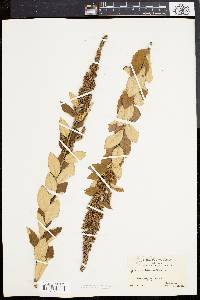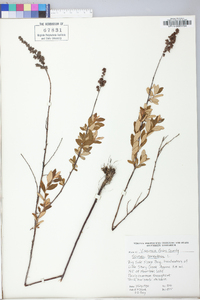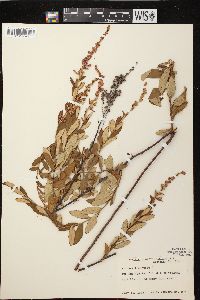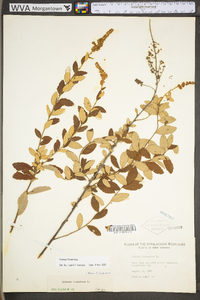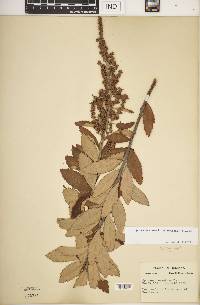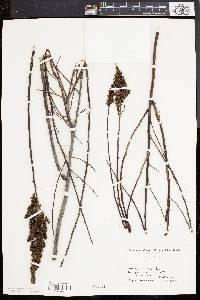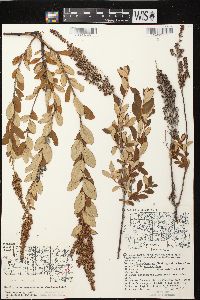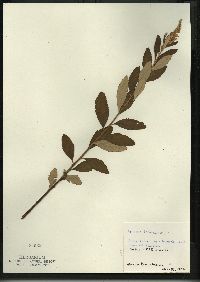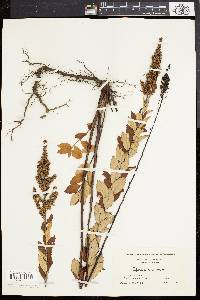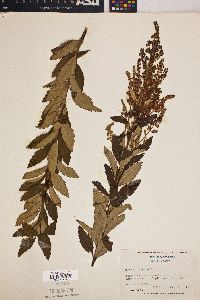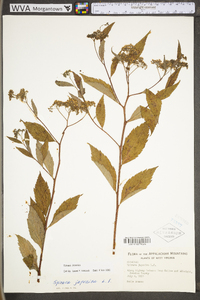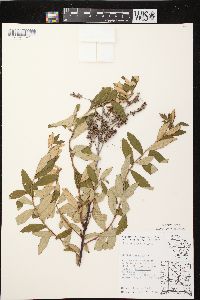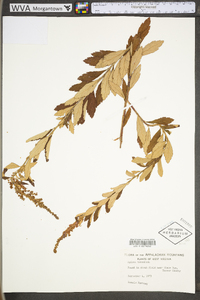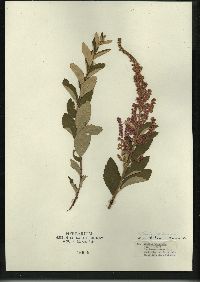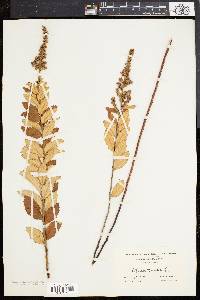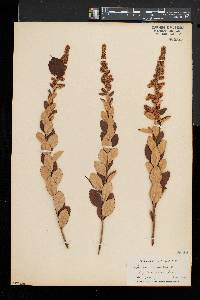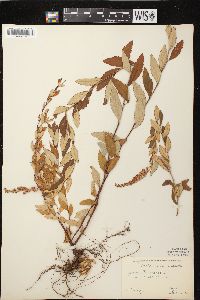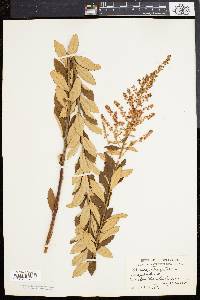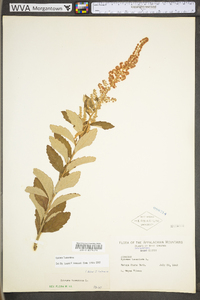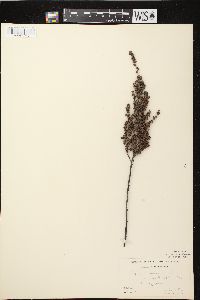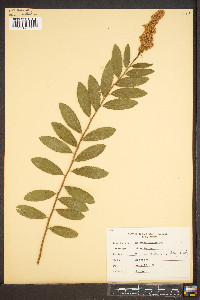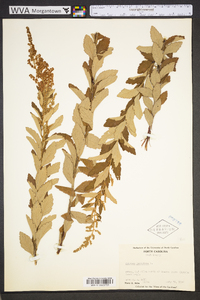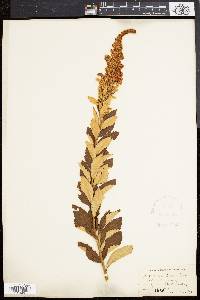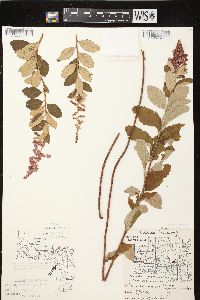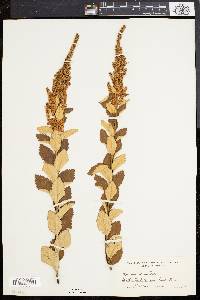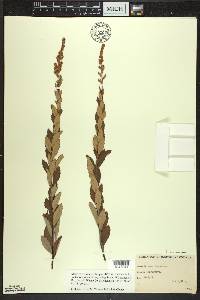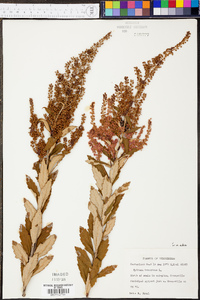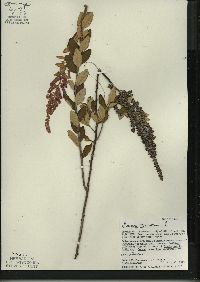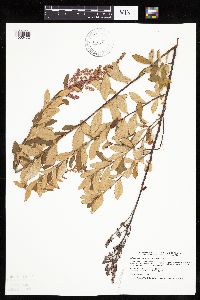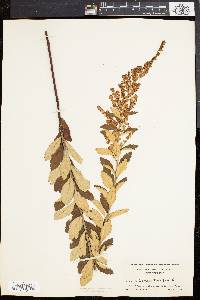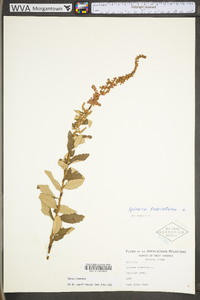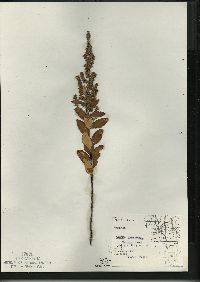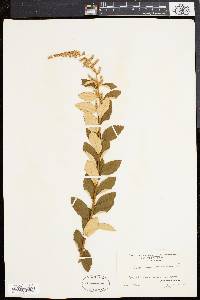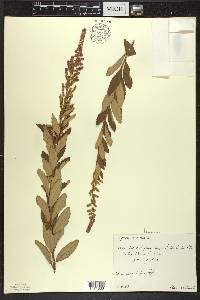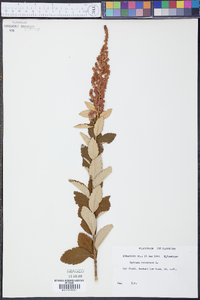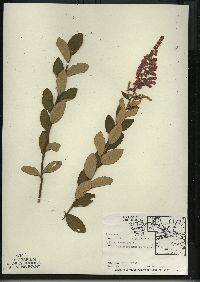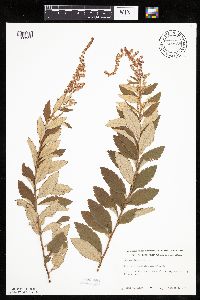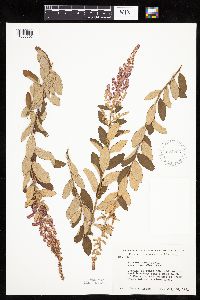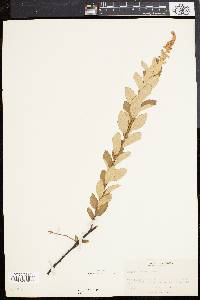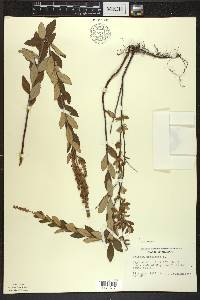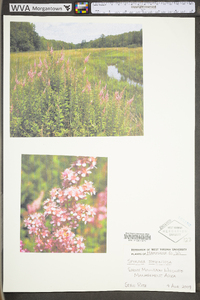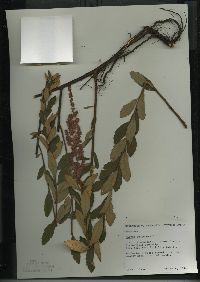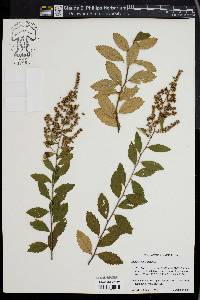
|
|
|
|
Family: Rosaceae
Steeplebush
[Spiraea rosea Raf., moreSpiraea tomentosa f. albiflora J. F. Macbr.] |
Spiraea tomentosa Linnaeus, Sp. Pl. 1: 489. 1753. Hardhack, steeplebush, spirée tomenteuse{Attr:E F W} Shrubs, 3–15 dm. Stems erect to ascending, rarely branched. Leaves: petiole 2–3 mm; blade ˂bicolorous˃, ovate-lanceolate, 3–6 × 1–2.5 cm, coriaceous, base cuneate, margins coarsely serrate to crenate on distal 3/4, (secondary teeth on large and long shoot leaves), venation pinnate craspedodromous, secondary veins prominent, apex acute or rounded, abaxial surface densely ˂white to gray, tan, or rusty˃, tomentose, adaxial glabrous or puberulent. Inflorescences predominantly terminal, narrow, conic panicles, ˂150–15,000+-flowered˃, 5–30 × 3–20 cm, ˂branching varying from compact to wide and spreading˃; branches tomentose. Pedicels 0.1–1.5 mm, tomentose. Flowers 4–6 mm diam.; hypanthia hemispheric, 0.5–1 mm, abaxial surface tomentose, adaxial glabrous; sepals triangular, 0.7–1.1 mm; petals usually light to dark pink, sometimes white or purple, ovate to orbiculate, 1–1.5 mm; staminodes 0; stamens 15–20, 1 times petal length. Follicles cymbiform, 2–2.5 mm, tomentose to arachnoid. 2n = 24, 36. Varieties 2 (2 in the flora): e North America; introduced in Europe. P. J. Salamun (1951) conducted a comprehensive study of variation of the inflorescence across much of the range of Spiraea tomentosa and concluded that the two varieties could be segregated based upon the number of flowers or fruits per centimeter (density) of a lateral branch of the inflorescence. Intermediate populations have been identified, particularly in western New York and Pennsylvania. A. Gille (1949) discussed the overall distribution of S. tomentosa without evaluating varieties, and conducted a detailed study of its ecology in Quebec. The occurrences of this species in Oregon are as a weed in cranberry bogs; it has the potential to spread to natural wetlands. The species is reported as invasive in Belgium and Poland. Shrub to 1.2 m tall Leaves: alternate, short-stalked, 3 - 7 cm long, egg-shaped to oblong or lance-shaped with a pointed tip, toothed, minutely wrinkled above, white or reddish brown beneath with dense hairs and prominent veins. Flowers: borne terminally in a narrow branched inflorescence (panicle) 5 - 20 cm long with six to twenty flowers per cm, pink to purple (rarely white), with five reflexed sepals, five petals, and stamens longer than the petals. Fruit: firm and dry, breaking open along one side (follicle), hairy, diverging, with tiny oblong seeds. Twigs: brownish and hairy. Similar species: Spiraea alba differs by having more or less hairless leaves, spreading sepals, and hairless fruit. Spiraea x billiardii has hairless fruit. Spiraea prunifolia has an unbranched inflorescence (umbel). Spiraea tomentosa var. rosea has only six to ten flowers per cm of inflorescence, while the more eastern variety, Spiraea tomentosa var. tomentosa, has eleven to twenty flowers per cm of inflorescence. Flowering: May to June Habitat and ecology: Rare in our region, growing in moist thickets or bogs. Occurence in the Chicago region: native Etymology: Spiraea comes from the Greek word speiraira, a plant used to make garlands. Tomentosa means "densely wooly." Author: The Morton Arboretum Simple or sparsely branched shrub to 12 dm; lvs ovate to oblong or lanceolate, 3-5 cm, beneath white or rufous with a dense tomentum and prominently veined; infl terminal, branched, elongate, 5-15 cm; hypanthium tomentose; sep reflexed after anthesis; fls pink or rarely white, 3-4 mm wide; fr pubescent; 2n=24. Swamps and wet meadows; N.S. and N.B. to Que. and Minn., s. to N.C., Tenn., and Ark. July-Sept. Var. tomentosa, chiefly eastern, has 11-20 fls per cm of axis; the ill-defined, mostly western var. rosea (Raf.) Fernald has 6-10 fls per cm of axis. Gleason, Henry A. & Cronquist, Arthur J. 1991. Manual of vascular plants of northeastern United States and adjacent Canada. lxxv + 910 pp. ©The New York Botanical Garden. All rights reserved. Used by permission. |

